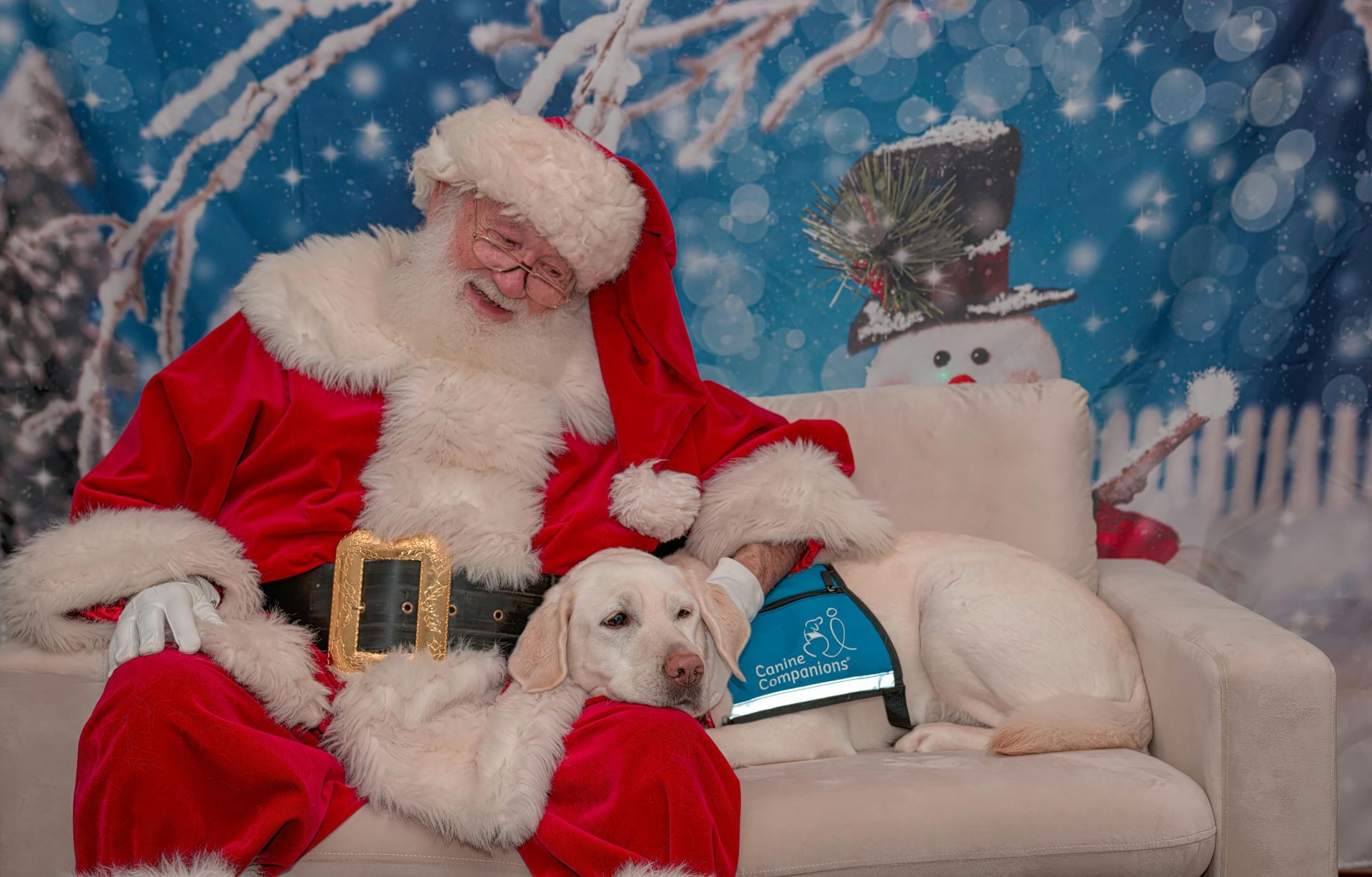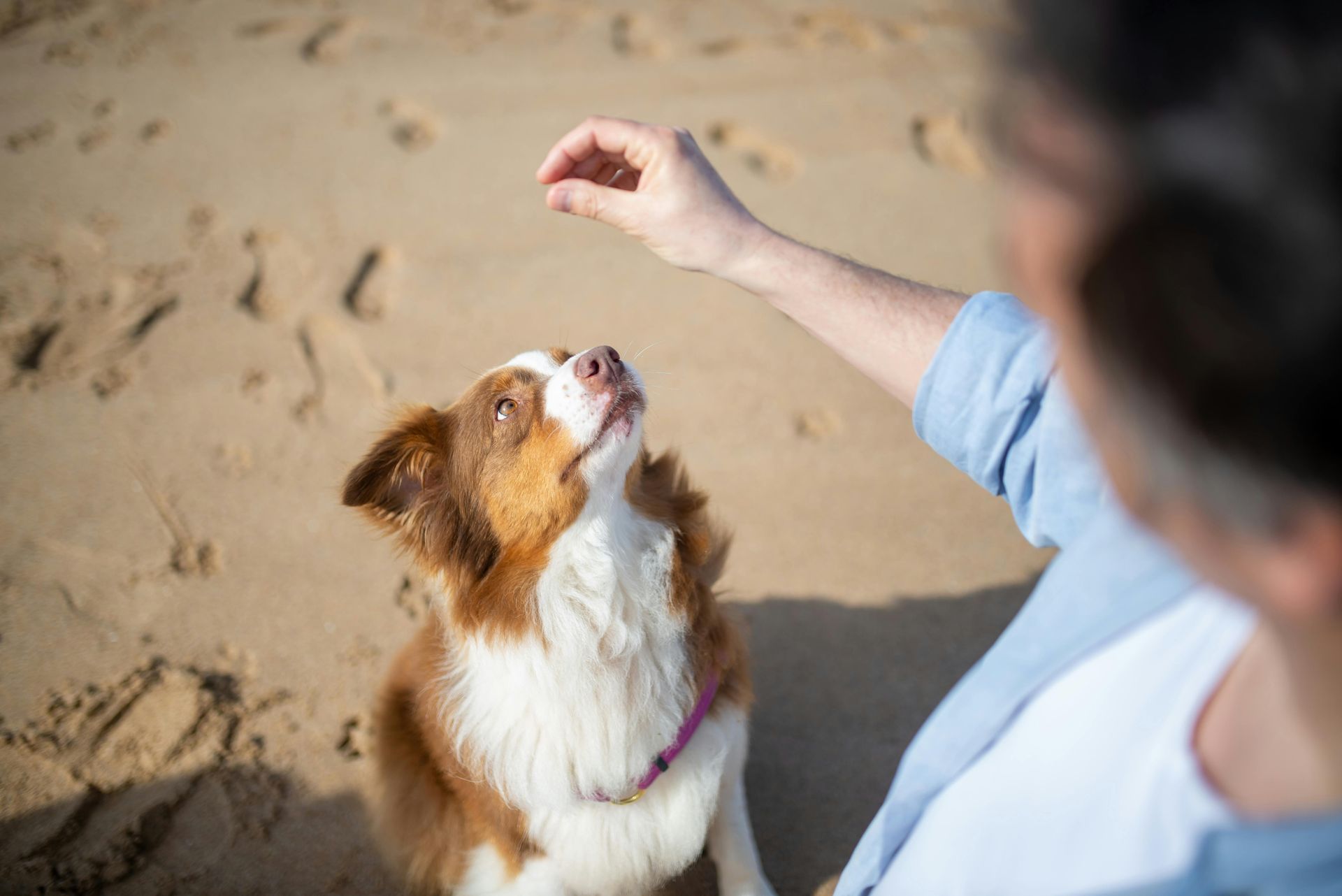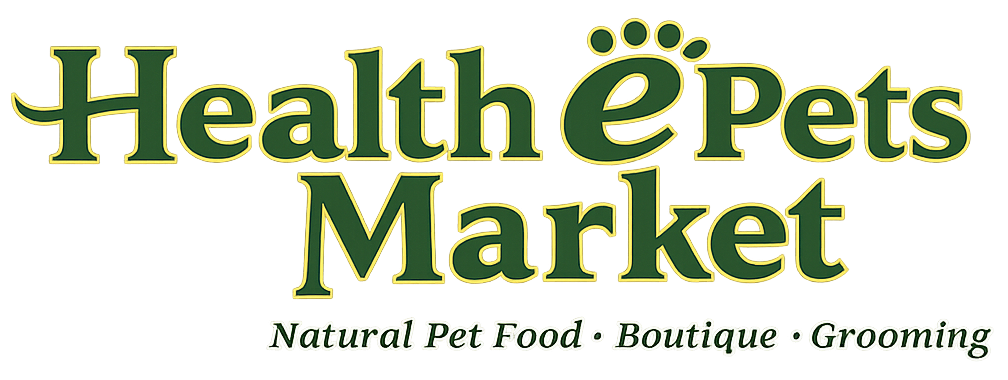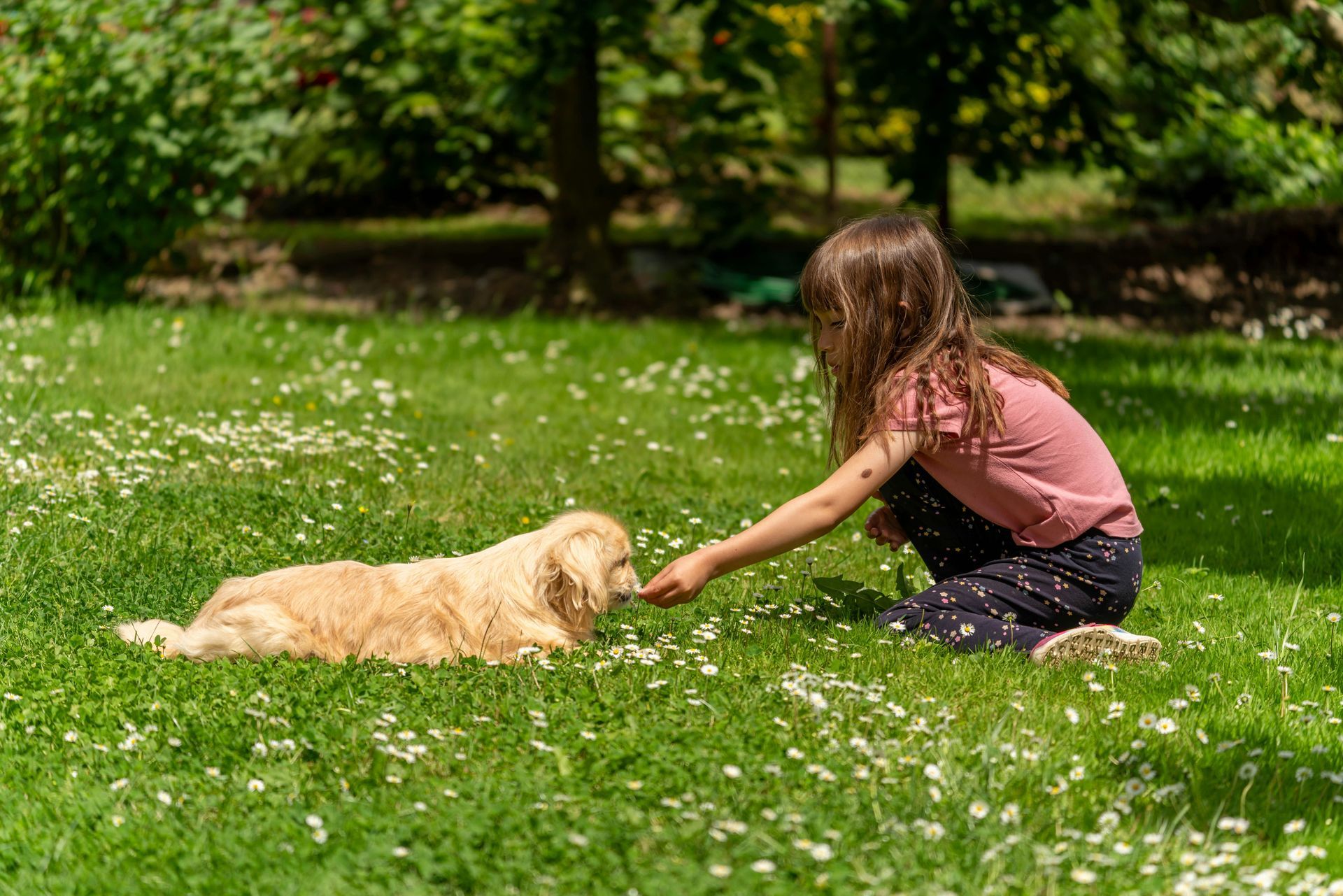Thanksgiving Foods That Are Dangerous for Pets (and Safe Alternatives)
Thanksgiving is about gratitude, family, and food. Lots of food.
Your dog gives you those eyes. Your cat rubs against your leg. They want in on the feast, and it's tempting to share.
But before you slip them a piece of turkey or a bite of stuffing, you need to know what's safe and what could land you at the emergency vet instead of watching football on the couch.
At Health E Pets Market in Jupiter, we see a spike in frantic calls every Thanksgiving from pet owners whose dogs got into the trash or cats nibbled on something they shouldn't have. Let's make sure your pets stay safe while you enjoy the holiday.
Why Thanksgiving Is Risky for Pets
Thanksgiving combines three things that spell trouble for pets:
- Rich, fatty foods they're not used to
- Toxic ingredients hiding in dishes
- Chaos that leads to unsupervised snacking
Even well-meaning guests can cause problems. Aunt Linda doesn't know that onions are toxic. Your nephew thinks it's funny to feed the dog under the table. One bite of the wrong thing can cause vomiting, diarrhea, pancreatitis, or worse.
Prevention is easier than treatment. Let's break down what to avoid and what's actually safe.
Dangerous Thanksgiving Foods for Dogs and Cats
Turkey Bones
Cooked turkey bones are a hard no. They splinter easily and can cause choking, intestinal blockages, or puncture your pet's digestive tract.
Raw bones are different and can be beneficial, but cooked bones from your Thanksgiving turkey are dangerous. Keep them out of reach and dispose of them securely.
Onions and Garlic
These are in almost everything: stuffing, gravy, mashed potatoes, green bean casserole. Both onions and garlic (and their relatives like shallots and leeks) contain compounds that damage red blood cells in dogs and cats. This can lead to anemia.
Even small amounts add up. A little bit in the stuffing, a little in the gravy, it accumulates fast.
Grapes and Raisins
If your Thanksgiving menu includes a fruit salad or stuffing with raisins, keep it far away from pets. Grapes and raisins can cause sudden kidney failure in dogs. We don't know the exact toxic dose, so it's safest to avoid them entirely.
Cats are less likely to eat them, but the risk is still there.
Chocolate and Desserts
Chocolate is toxic to dogs and cats. The darker the chocolate, the more dangerous it is. Baking chocolate and dark chocolate are the worst.
But desserts also contain other hazards:
- Xylitol: This artificial sweetener is in sugar-free pies, cookies, and even some whipped creams. It causes a rapid drop in blood sugar and can lead to liver failure.
- Macadamia nuts: Found in cookies and pies, these cause weakness, vomiting, and tremors in dogs.
Alcohol
It seems obvious, but pets can get into drinks left unattended or dishes made with alcohol (rum cake, bourbon-glazed ham). Alcohol poisoning is serious and can happen fast, especially in small pets.
Fatty Foods and Gravy
Turkey skin, ham fat, gravy, butter-loaded mashed potatoes—all delicious, all risky.
High-fat foods can trigger pancreatitis, an inflammation of the pancreas. Symptoms include vomiting, diarrhea, loss of appetite, and abdominal pain. Pancreatitis can be life-threatening and often requires hospitalization.
Sage and Other Herbs
Sage is a common Thanksgiving herb, but it contains oils that can cause stomach upset in pets. In large amounts, it may lead to more serious issues.
Other herbs to watch: nutmeg (toxic in large amounts), chives, and raw yeast dough (it can expand in the stomach and cause bloating or alcohol poisoning as it ferments).
Corn on the Cob
Dogs love corn, but the cob is a choking hazard and a common cause of intestinal blockages. If your dog swallows a piece of cob, it may require surgery to remove.
Safe Thanksgiving Foods for Pets
Not everything on the table is off-limits. Here's what you can share in moderation:
Plain Turkey (White Meat, No Skin)
Skinless, boneless turkey breast is safe and protein-rich. Just make sure it's plain with no seasoning, butter, or gravy.
Remove all bones and avoid dark meat or skin, which are higher in fat.
Plain Sweet Potatoes or Pumpkin
Both are great for digestion. Sweet potatoes provide fiber and vitamins. Plain canned pumpkin (not pie filling) can soothe upset stomachs.
Skip the marshmallows, butter, and brown sugar.
Green Beans (Plain)
Fresh or cooked green beans without seasoning, butter, or fried onions are a healthy, low-calorie snack.
Carrots
Raw or cooked carrots are safe and crunchy. Many dogs love them.
Plain Mashed Potatoes (in Small Amounts)
If they're made with just potatoes and a little plain water or broth, a small spoonful is okay. But most Thanksgiving mashed potatoes have butter, cream, garlic, or salt, so proceed with caution.
Cranberries (Plain)
Fresh cranberries in small amounts are safe. Avoid cranberry sauce, which is loaded with sugar.
What to Do If Your Pet Eats Something Dangerous
Accidents happen. Trash gets raided. A guest feeds something they shouldn't.
If your pet eats a toxic food:
- Stay calm
- Identify what they ate and how much
- Call your vet or the ASPCA Poison Control hotline (888-426-4435)
- Do not induce vomiting unless directed by a professional
Symptoms to watch for:
- Vomiting or diarrhea
- Lethargy or weakness
- Drooling or excessive thirst
- Tremors or seizures
- Difficulty breathing
- Bloated or painful abdomen
If you see any of these, get to a vet immediately.
How to Keep Your Pet Safe During Thanksgiving
Set Boundaries Early
Decide before guests arrive whether pets will be allowed near the dining table. If not, set up a quiet, comfortable space for them with their own food and water.
Educate Your Guests
Let everyone know not to feed your pets table scraps. Put a sign near the table if needed. It's easier to prevent than to undo.
Secure the Trash
Use a trash can with a locking lid or put it in a closed pantry or garage. Pets are masters at getting into garbage, especially when it smells like turkey.
Stick to Their Normal Diet
Even if you want to celebrate with your pet, keep their meals consistent. Sudden diet changes can cause stomach upset, even if the food itself is safe.
If you want to give them something special, consider a high-quality treat from Health E Pets Market instead of table scraps.
Provide Distractions
Give your pet a puzzle toy, a long-lasting chew, or a frozen treat to keep them busy while you eat. This reduces begging and keeps them entertained.
Thanksgiving Treat Ideas from Health E Pets Market
You don't have to skip celebrating with your pet. You just need the right treats.
Stop by our Jupiter store for:
- Freeze-dried turkey treats (real turkey, nothing else)
- Pumpkin and sweet potato chews
- Natural dental chews to keep them occupied
- Grain-free biscuits made with wholesome ingredients
We also carry supplements that support digestion in case your pet does get into something they shouldn't.
Our staff has been helping Jupiter pet owners since 2010, and we know which treats are safe, healthy, and loved by picky eaters.
The Bottom Line
Thanksgiving is a time to be thankful for the people and pets we love. Keep your pets safe by knowing what foods are dangerous and sticking to vet-approved treats.
A little planning goes a long way. Keep toxic foods out of reach, educate your guests, and have a plan if something goes wrong.
Your pets don't need turkey and gravy to feel included. They just need your time, attention, and love.
Celebrate Safely with Health E Pets Market
Looking for safe, natural treats your pet will love this Thanksgiving? Visit Health E Pets Market in Jupiter, Florida. We're family-owned, locally trusted, and here to help you keep your pets healthy and happy through the holidays.
Browse our selection of dog treats, cat treats, and health supplements, or stop by and talk to our experienced team.
Your pets are family. Let's keep them safe this Thanksgiving.
Helpful links:
- ASPCA's list of people foods to avoid giving pets
- AKC article on pancreatitis in dogs
- Pet Poison Helpline resource
- Call Pet Poison Helpline® at 855-764-7661
Share content





